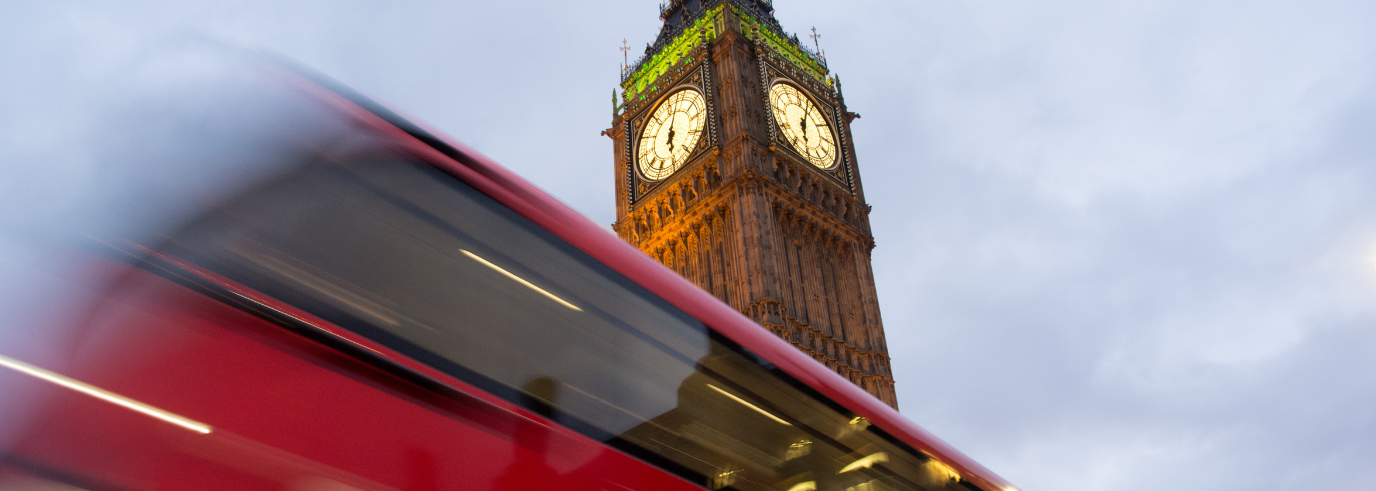
Well connected London postcodes
It’s not all about the Tube in the Capital. All aboard for our guide to those London boroughs that are spoilt for choice when it comes to excellent transport links.
1 November, 2023
London’s world-famous Tube system has been dutifully transporting London’s city dwellers around since 1863, when the then-revolutionary Metropolitan Line hauled commuters on gas-lit wooden carriages in a shroud of locomotive smoke between Paddington and Farringdon. It extended from Baker Street to Swiss Cottage in 1868, before a steady creep of new Tube lines and ever more distant stations brought London’s outer reaches in from the cold and shaped the thriving, well-connected Capital that we know today.
The beauty of our city’s logistics? They’re improving all the time. The game-changing Elizabeth Line interchanges with the Tube or Docklands Light Railway (DLR) at nine out of its 10 stations. There are plans to make London more accessible through projects like the new Superloop bus route. The Bakerloo Line is due to get two extra stops - Burgess Park and the Old Kent Road. And looking further into the future, there’s a proposed extension to the DLR across the Thames to Thamesmead.
In certain urban postcodes, the London Underground isn’t always the top mode of transport. There are swathes of south London that are tube-starved, but in transport-rich neighbourhoods, it matters not. From overground trains and trams to boats and bikes, there’s a host of easily commutable areas that let you swerve the daily ULEZ charge and whisk you conveniently to the city and beyond.
Blackheath and Greenwich
Greenwich and Blackheath in Zones 2 and 3 might have only one Underground option – a Jubilee Line station but there’s no Tube envy here. That’s because locals have plenty of options when it comes to getting around. Both have an overground station, with direct trains whizzing you into central London in 20 minutes, you can hop on the DLR to Bank, or cruise the daily commute to the West End and beyond to Putney on an Uber Boat, surveying the city’s sights along the way.
The return of a cruise crossing marks the triumphant rebirth of passenger travel on the Thames. In 1816, locals were punted from the south to north banks in rowing boats, before steamboat services took over in the 1830s. A surge of house building and the railway boom saw the London & Greenwich Railway – the world’s first suburban line - open between Deptford and London in 1836, robbing the boat service of much of its business.
Leaps and bounds in 19th century engineering brought route rivals the Blackwall Tunnel in 1897 and in 1902, the foot tunnel leading to the Isle of Dogs – a necessity when a thick, tarry fog rolled in and choked the waterways. There followed the DLR connection in 1987 and in 1999, a Jubilee Line Tube station. The Uber Boat by Thames Clipper service successsfully relaunched the same year and now transports around 4 million passengers annually along the River Thames.
KFH Blackheath Lettings Branch Director Shelley Matczak was lucky enough to grow up in this idyllic south green belt. ‘Blackheath attracts families for its quick city commute and quintessential English village feel, while Greenwich is popular for couples due to its lively riverside and fantastic transport connections,’ she says.
Transport
- Uber Boat by Thames Clipper from Greenwich Pier and Woolwich (Royal Arsenal) Pier to the Embankment in around 40 minutes.
- North Greenwich Underground to London Bridge/City Thameslink in 18 minutes.
- Greenwich DLR connects with Stratford in around 30 minutes (change at Canary Wharf DLR), Bank in 21 minutes and Tower Gateway in 34 minutes.
- Greenwich overground to Cannon Street in 15 minutes, and London Bridge in around 32 minutes.
- Blackheath overground to the DLR connection in Lewisham in 4 minutes, and to London Bridge in 15 minutes, Waterloo East in 15 minutes, Cannon Street in 20 minutes, Charing Cross in 25 minutes and London Victoria in 30 minutes.
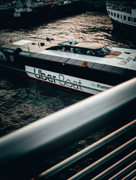
Blackheath attracts families for its quick city commute and quintessential English village feel.
Dulwich
Most of south London has been short-changed on the Tube front. Of the 272 stations, less than 10% lie south of the river. This is of no particular concern to the residents of Dulwich though. The upscale and leafy hamlets of Dulwich Village and East Dulwich straddling Zones 2 and 3 boast a rural village vibe that feels a world away from the bright lights of central London. But three overground stations offer surprisingly fast access to the city – a speedy 15 minutes in fact!
Over a decade before trains charged through Dulwich, passengers had to rely on local entrepreneur Thomas Tilling’s horse-drawn buses. His first horse bus ran four journeys a day between Peckham and Oxford Street and by 1892, he owned 4,000 horses and was the biggest supplier of horsepower in London. One of his 500 stables was in Milo Road between Lordship Lane and Beauval Road in East Dulwich. By 1904, Tilling’s sons had taken over and ran their first double decker motorbus on the number 12 from Peckham to Oxford Circus that still runs today – the oldest operating bus route in London.
A faster way to the West End came in 1863, when The London, Chatham and Dover Railway unveiled its line from Herne Hill to Beckenham through the Dulwich Estate. They opened Dulwich station – later West Dulwich – to the public the same year. It was payments from the railway company that funded the building of the Charles Barry Jnr-designed Dulwich College on Dulwich Road – a world-renowned boys’ school to this day.
1868 saw significant expansion in rail travel and Champion Hill station – now East Dulwich -opened where Grove Vale meets Dog Kennel Hill, followed by North Dulwich station. Landowner Dulwich College insisted North Dulwich be built to their exacting standards, and the resulting Charles Barry Jnr-designed Romanesque/Tudor station is now Grade II listed. As is the iconic red K6 telephone kiosk that you can still see inside the portico of the station.
KFH East Dulwich Sales Branch Director Stephen Akinlusi believes that recent improvements in transport infrastructure have further elevated Dulwich's appeal. ‘I have noticed a huge influx of people into Dulwich, as it offers great lifestyle benefits – gorgeous independent shops, outdoor spaces and a strong sense of community spirit,’ he says. ‘Well connected neighbourhoods are highly sought after, and as a result Dulwich has become a hot area for buyers or renters.’
Transport
- North Dulwich overground to London Bridge in 15 minutes.
- West Dulwich overground to London Victoria in 17 minutes or to London Bridge in 34 minutes.
- East Dulwich overground to London Bridge in 14 minutes.
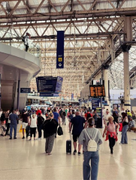
I have noticed a huge influx of people into Dulwich, as it offers great lifestyle benefits.
Wimbledon and Putney
Green and pleasant south west London neighbours, Wimbledon and Putney in Zones 2 and 3 give buyers and renters plenty of reasons to take a punt on this decidedly upscale part of town. Both boast a village-like charm, a fashionable high street, splendid rows of Georgian and Victorian homes, generous parklands and multiple modes of transport.
Just under 30 minutes away from central London on the Tube and 17 minutes by rail, Wimbledon is the only station endowed with an interchange between overground, underground and a Tramlink service that lets you loop around the suburbs to Croydon and Beckenham. The town centre owes its very existence to the arrival of the railway. The passenger steam service ran to Battersea and Woking from what was called Wimbledon and Merton Station in 1838. Then in 1855, the West Croydon to Wimbledon line rumbled into service, followed by a Streatham via Tooting Junction service in 1868 – two lines that were eventually absorbed into the District Railway – what we know now as the District Line. Links to the centre of London were strengthened in 1889 when the District Railway opened an extension of its line from Putney Bridge, offering Wimbledon a direct connection to the Underground system. The West Croydon to Wimbledon Line opened as a Tramlink line in 2000, advancing Wimbledon’s rise to the robust railway junction it is today.
KFH Wimbledon Sales Branch Director Jimmy Carr extols the virtues of well-connected Wimbledon: ‘Couples love to have the flexibility to reach the City via the Northern Line and Waterloo on the overground,’ he says. This is ideal for Tube strikes, especially given the increase in the number of employees now working in the office more regularly.’
Perched on the south side of the Thames nearby, residents in Putney can zip into the West End via train in 15 minutes, by Tube in 20 minutes or by Uber boat from Putney Pier into central London in 50 minutes. You can even pick up a Santander bike from Putney’s three docking stations.
Putney station opened on the Nine Elms to Richmond line in 1846 and as previously mentioned, a line extending from Putney Bridge to Wimbledon was opened on the District Line in 1889 - the last part of the line to replace steam trains with electric in 1905. London Underground bought the station from the National Rail network for just £1 in 1994.
Putney’s illustrious transport history harks right back to the Domesday Book of 1086. It records details of a ferry toll that’s later mentioned in the household accounts of Edward I, who was transported by boat from Putney to Westminster. The thoroughly modern version of this royal route comes in the form of today’s Uber Boat by Thames Clipper that follows the same 13th century navigation from Putney to Westminster Pier.
The river taxi makes this leafy pocket of south west London a commuter’s dream for KFH Putney Lettings Branch Director Rohan Alleyne. ‘The Uber Boat by Thames Clipper has recently begun a new weekend service and is a must try for those sick of being squashed on the Tube, train or bus. There is even a bar for those who fancy a beverage on the journey home. Given the fantastic links that Putney has, it attracts families and professionals working in the City and West End, as you can quite easily be in Central London within 30 minutes.’
Transport
- Wimbledon overground to London Waterloo in 17 minutes.
- Wimbledon Thameslink to London Blackfriars in 38 minutes and St Pancras International in 42 minutes.
- Southfields or Wimbledon Park Underground - District Line to Paddington in 24 minutes or to Charing Cross in 25 minutes.
- Tramlink from Wimbledon to East or West Croydon in just under 30 minutes, or to Beckenham Junction in 50 minutes.
- Uber Boat by Thames Clipper from Putney Pier to Embankment in 48 minutes.
- Santander bike from Putney railway station, Upper Richmond Road or Putney Pier.
- Putney overground to Waterloo in 15 minutes.
- Putney Bridge Underground – District Line to Westminster in just under 25 minutes.
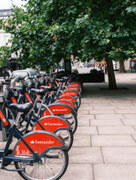
Couples love to have the flexibility to reach the City via the Northern Line and Waterloo on the overground.
Ealing
Great transport connections via the Central, District and Piccadilly Lines and trains to London Paddington and Liverpool Street from an area that’s as leafy and green as Zone 3 Ealing make it a draw for commuters. And its latest speedy addition – a stop on the Elizabeth Line that’s a straight, 11-minute shot into central London, brings it even closer to central London and to Heathrow airport.
Life was tranquil in sleepy Ealing in the 18th century, when it was mostly open countryside and fields. Apart from one busy highway for horse-drawn carriages heading westwards towards Oxford and eastwards towards London, and where travellers could stop for refreshments at the many taverns along the way.
These taverns were unfortunately wiped out alongside Ealing’s countryside status on the building of the Great Western Railway’s Ealing Haven Station in 1838 – now Ealing Broadway – and the Metropolitan District Railway in 1879 – now a District Line Underground station. A tramline was built in 1901 along the Uxbridge Road from Shepherd’s Bush to Southall following the building of new residential estates and shopping parades, but shuddered to a halt in 1936 when trolleybuses took over. Ealing’s reputation as a leafy London district rose again - officially declared ‘Queen of the Suburbs’ by borough surveyor Charles Jones in 1902 for its abundance of green and its best-of-both-worlds, city meets country location.
But Ealing’s nickname is still well-deserved says KFH Ealing Sales Branch Director Chris Taylor, who declares it a dream destination for metropolitan living with the feel of village life. ‘Ealing has a plethora of attractive features,’ he says. ‘Green spaces that are great for relaxing and socialising, unrivalled transport links with the new Elizabeth Line express, a wealth of period properties and modern developments.’
Transport
- Elizabeth Line from Ealing Broadway and West Ealing to Heathrow in around 30 minutes, London Paddington in 12 minutes, Bond Street in 15 minutes, Liverpool Street in 25 minutes.
- Ealing Broadway Underground – District Line to Victoria in 30 minutes.
- Ealing Common Underground - Piccadilly Line to King’s Cross in 34 minutes.
- West Ealing overground to Liverpool Street in 23 minutes.
- Ealing Broadway overground to Liverpool Street in 21 minutes.
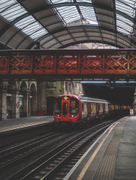
Looking to rent or buy in areas with a good commute?
Get in touch with our team of local experts today.